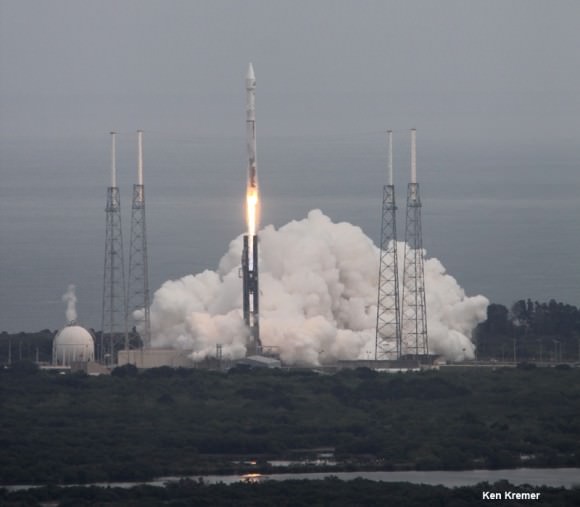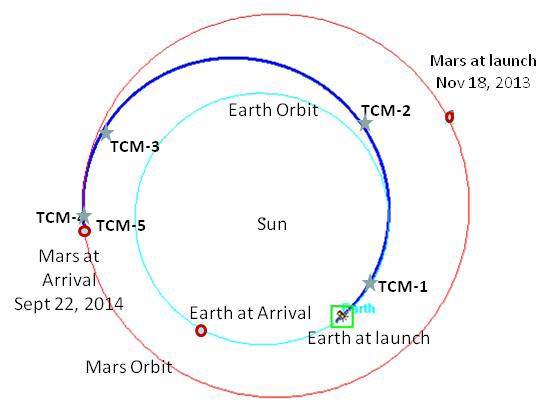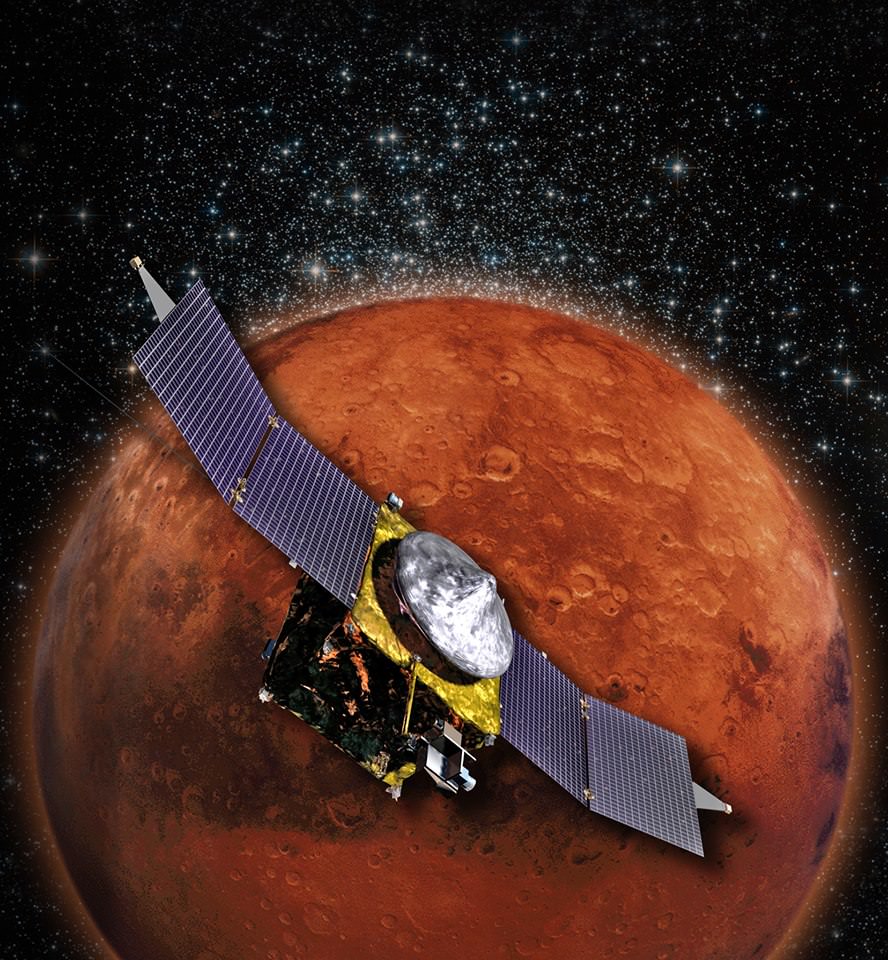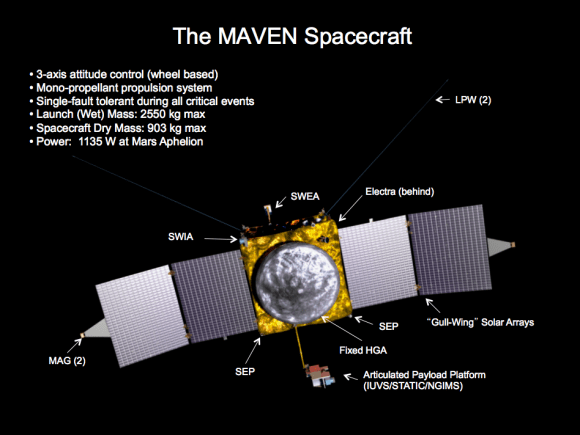NASA’s newest Mars orbiter, the Mars Atmosphere and Volatile Evolution (MAVEN) probe passed a significant interplanetary milestone with the announcement that all of the craft’s science instruments were activated and passed their initial checkout.
“I’m delighted that we’re operating in space so well,” Bruce Jakosky, MAVEN’s Principal Investigator told Universe Today.
“We’re on our way!”
Earth is now clearly in the rear view mirror and fading with each passing day.
The $671 Million MAVEN spacecraft’s goal is to study Mars upper atmosphere to explore how the Red Planet may have lost its atmosphere and water over billions of years.
The MAVEN probe carries nine sensors in three instrument suites to study why and exactly when did Mars undergo the radical climatic transformation.
“I’m really looking forward to getting to Mars and starting our science!” Jakosky told me.
MAVEN aims to discover the history of water and habitability stretching back over billions of years on Mars.
It will measure current rates of atmospheric loss to determine how and when Mars lost its atmosphere and water.
MAVEN thundered to space nearly three months ago on Nov. 18, 2013 following a flawless blastoff from Cape Canaveral Air Force Station’s Space Launch Complex 41 atop a powerful Atlas V rocket and thus began a 10 month interplanetary voyage from Earth to the Red Planet.

“I can’t tell you how exciting this is to be now only seven and a half months from getting to Mars,” Jakosky gushed.
Further instrument checkouts are planned as the orbiter streaks closer to Mars including tesating to the Electra communications package that will serve as a critical relay for NASA’s surface rovers including Curiosity, Opportunity and the planned 2020 rover.
“The second Trajectory Correction Maneuver (TCM-2) is scheduled for Feb. 26,” said Jakosky.

TCM thruster firings insure that the spacecraft is exactly on course for the do or die orbital insertion maneuver when MAVEN arrives on September 22, 2014.
To date MAVEN has flown over 137 million miles (221 million km) of its total 442 million miles (712 million km) path to Mars. It is speeding around the sun at 69,480 mph or 31.06 kps.
“The performance of the spacecraft and instruments to date bears out all the hard work the team put into testing the system while it was on the ground,” said David Mitchell, MAVEN project manager at NASA’s Goddard Space Flight Center in Greenbelt, Md, in a statement.
“The way that the operations team has performed while flying the system has been nothing short of outstanding. We have big events ahead of us before we can claim success but I am very pleased with how things have gone thus far.”
MAVEN is not alone in the frigid vacuum of space. She is joined by India’s Mars Orbiter Mission (MOM) orbiter in pursuit of Mars to fortify Earth’s invasion fleet.
MOM will reach Mars vicinity on Sept. 24, just two days after the arrival MAVEN on Sept. 22, 2014.
Stay tuned here for Ken’s continuing MAVEN, Curiosity, Opportunity, Chang’e-3, SpaceX, Orbital Sciences, LADEE, MOM, Mars and more planetary and human spaceflight news.
Ken Kremer




MAVEN gets to Mars orbit just ahead of Comet 2013 A1’s (Siding Spring) passage… then perhaps will witness a meteor shower on Mars? How will MAVEN participate in those observations?
Maven might be able to see some shooting stars from above. That would be cool.